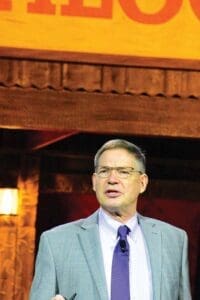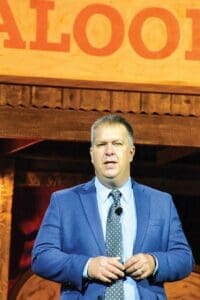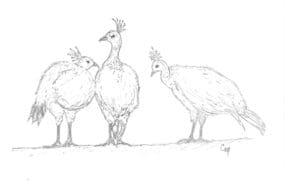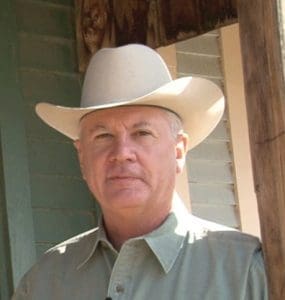Consumer Demand Is Driving the Profitability Bus
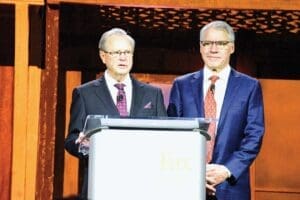
By Burt Rutherford Contributing Editor
For those who didn’t attend the CattleFax outlook session at the recent Cattle Industry Convention in San Antonio, guess what dominated the discussion? The weather and markets, of course. Which makes sense, because of all the things a beef producer can’t control, the weather and markets have the most impact.
And besides, what do beef producers talk about whenever two or more gather at the cafe?
Let’s Start With Markets
Here is the outlook for 2025 cattle prices, according to CattleFax:
- Fed steer – $198 per cwt average, ranging primarily between $185 and $215, although market dynamics may push prices outside this range from time to time. However, cattle feeding profitability is forecast to decline as tighter feeder cattle supplies drive more aggressive bidding.
- 800-pound steer – $270 per cwt average. As the year unfolds, tight supplies will likely push breakevens higher, supporting feeder cattle values.
- 550-pound steer – $340 per cwt average. Steer calf prices may peak near $370 in the spring and find support around $310 in the fall.
- Utility cows – $140 per cwt average, supported by reduced non-fed slaughter and strong lean trim demand. Prices may hit $155 in late spring and retreat to near $120 this fall.
- Bred cows – $3,200 per head average. Higher calf and feeder steer prices are sending a signal to expand. Demand for high-quality bred heifers and young bred cows saw an uptick last fall. But the timing of any expansion depends a lot on the weather.
With exceptionally tight cattle supplies fueling those prices, leverage is firmly in the hands of cow-calf producers and cattle feeders, according to CattleFax COO Mike Murphy. And leverage will increase as new packing plants come on line. The first, an American Foods Group packing plant being built near St. Louis, Mo., is expected to start processing cows, bulls and fed cattle in April or May.
“We won’t see the tightest supplies in this cattle cycle from a harvest standpoint until we get into 2026 and 2027,” said CattleFax CEO Randy Blach. The markets, however, have already priced in much of that. “Just because the supply is going to be at the tightest level in ’26 and ’27, that doesn’t mean the bulk of the price increase won’t be already experienced as we work through 2025.”
Retail Prices Matter
Along with cattle prices, retail beef prices have increased as well. That’s a boon and possibly a bane for beef producers.
The boon: As retail beef prices increase, more dollars flow into the market, Murphy said. That’s evident in the ratio of retail dollars and calf prices, he added. “Over the next few years – 2025, 2026, 2027 – we expect this ratio to be very stable. What you should find, then, is as long as we can maintain retail price, we’re going to have a very stable calf market.”
And that’s the potential bane. At what point do retail beef prices get too high and consumers start to trade down to chicken and pork? “We need to take retail prices to a level high enough where it sends a signal to consumers that they need to ration usage of our product,” Murphy said.
He expects retail beef prices to increase somewhat over the next few years. Will it increase enough to reach the tipping point? Only time will tell.
Meanwhile, it’s important to remember this: “The only place we get new dollars into our business is through the consumer,” according to Blach. “If we’re not satisfying the consumer, they’re going to take the dollars elsewhere.”
Fortunately, consumers have been very satisfied overall with the beef they buy, given that beef demand remains strong in the face of higher retail prices. That, Blach said, is what’s driving the bus in the beef business.
“Consumers expect high-quality beef day in and day out. And they expect it to be safe, nutritious and a wonderful eating experience. And we’ve been able to deliver, but we’re not there yet,” Blach said.
Choice and Prime carcasses constitute around 84 percent of the mix, he told beef producers. That means there’s still room at the top to improve.
Genetic improvement will be the tool, but the market will be the power source. “Look at the number of cattle we’re selling on grids and formulas,” Blach said. “It’s increased substantially over the last two decades. It’s gone from about 30 percent of the cattle selling on some sort of a formula value-based marketing agreement to about 65 percent.”
Grids and formulas provide market incentives and discounts that encourage higher quality carcasses. That steady increase in Choice and Prime carcasses is happening because of the price signals that grids and formulas send back through markets via the various value-based programs, Blach said.
Demand Is Higher. So What?
“We can talk about beef demand being at a 37-year high, but what does that really mean?” Blach asked. “If I’m a producer, how much does that pay me?” After all, a lot happens between the ranch gate and the retail meat counter.
His answer: “$800 a head is what that demand growth has been worth from the demand lows in 1998.” We’ve got the best profitability, historically, in the cow-calf segment, Blach said. But there’s a wide range in those numbers between higher cost and lower cost producers.
Will High Prices Encourage Herd Rebuilding?
According to Kevin Good, CattleFax vice president of market analysis, “We’ve had eight years of liquidation. Eight million head have left the herd. Looking at cow slaughter alone, are we turning the corner? Not quite,” he said.
But looking at heifer placements in feedyards in the fourth quarter of 2024 and heifers being sold at auction markets, that indicates we’re starting to stabilize the beef herd, he said.
“But when you combine those two together, it would suggest that this turnaround is going to be much slower than we experienced the last cycle,” even though it’s likely the beef business has hit the low water mark in cow liquidation. “We would suggest mild expansion as we move over the next couple of years.”
That’s because there are headwinds – producer age, labor cost and availability, cost and availability of capital. The list is long. At the top is drought.
What About This Crazy Weather?
Actually, it’s not all that crazy, said Matt Makins, CattleFax meteorologist. “Don’t let anybody tell you the drought’s getting worse in the country.”
That’s because a peek back in time shows a very predictable cycle for wet and dry periods. “From 1900 to 1940, we had drought,” he said. Then the U.S. recovered from the Dust Bowl during a 40-year wet period from 1940 to 1980. And from 1980 to 2020, the nation saw a surplus, most of which occurred in the eastern part of the nation. “Now we’re in a huge deficit again,” he said.
That 40-year cycle stems from natural cycles in both the Atlantic and Pacific. So, while shorter-term things like El Niño and La Niña certainly affect the weather, the longer term cycle depends on longer term water temperatures in both oceans.
“Since 1998, the big oceans have told us you will be in drought more frequently than not,” Makins said. “Those big oceans are very slow to change. How long before we talk more about El Niño frequency, more wet phases? If history repeats itself, within the next five years, we’re going to see the Atlantic change and start spreading more moisture,” he said.
That, however, is little consolation for the present. With La Niña in control, Makins predicts we’ll see drought acreage increase through June, first across the western United States this spring and move into the Pacific Northwest and Northern Plains this summer.
However, it looks like the monsoon could produce more moisture this year than in 2024. While that will bring smiles to those in the Southwest and into the Southern Plains, “A strong enough monsoon can decrease precipitation across the central Corn Belt,” he said. “Watch July closely.”
Looking at the second half of the year, there’s a 77 percent chance for either a La Niña or a neutral pattern. Neutral, however, isn’t really neutral, he explained, because it has a bias toward drought. “Data today suggest an outlook much like what was recorded in the latter half of 2024,” he said.
Tighten your cinch. 2025 is shaping up to be another interesting year.

Photo courtesy of Larry Stalcup
